Foods preserved in hermetically sealed metal containers, which are thermally processed and presented as durable food preserves, would not have had the wide consumer acceptance and global commercial diffusion they enjoy today without the continued development of improved metal sanitary containers.
Canning containers must be strong and durable, but more importantly be capable of remaining hermetically sealed under normal operating conditions and commercial logistics, in order to avoid microbiological recontamination of the food by seepage during its shelf life.
The safe preservation of canned foods, in order to keep them unalterable and suitable for direct human consumption (CHD) within a food safety framework (FDA, USDA-Food Safety and Inspection Service), considers the unrestricted compliance with the following conditions:
Proper handling and packaging of food with procedures according to Good Manufacturing Practices (GMP), which avoid incipient spoilage or fermentation of the raw material with gas production. And most importantly, the handling of containers both in reception and production, to generate hermetically sealed cans that are capable of preventing the infiltration or re-entry of microorganisms into the product after pasteurization or sterilization.
An effective heat treatment, defined by a process authority, to give the food a stable commercial sterility under normal storage and distribution conditions. The canning plant should also have suitable, well-designed equipment and appropriate standardization of the retort bank.
The use of appropriate operational procedures for can cooling and post-cooling can handling to protect the integrity of the sealed and thermally processed container.
Proper Food Handling and Packaging
The handling or preparation of food, depending on its chemical and bromatological composition, goes through several processes, such as maintenance in the cold chain, classification, washing, mixing, blanching, precooking and others, which will prevent microbiological proliferation, incipient deterioration or fermentation of the food in subsequent stages, such as packaging, addition of covering liquid, sealing and sterilization.
Blanching with hot water to which most vegetable products are subjected, or cooking with direct steam in the case of meat products, is mainly carried out between 80 and 100 °C (176 and 212 °F), serving several purposes, such as shrinking the food and expelling extra and intracellular gases, This gas release, which occurs prior to filling the container, is desirable because it reduces the canning stress during heat treatment, thus avoiding stretching of the seals and favoring the formation of a final vacuum in the canned food. This pre-heating of the food also serves to facilitate its packaging, inhibit enzymatic action, prevent oxidation and fix the natural colors in certain products.
The packing or filling of food in cans should consider providing a free head space of about 4 to 5 mm, depending on the height of the container, never fill it to the top to prevent food residues in the sealing area, because if this is trapped when the double seam is generated in the seaming machine, it can cause deformation of the flanges and can also act as a bridge or free access to introduce microbiological contamination inside the canned food.
Receipt and Closure of Sanitary Containers in Production
Every cannery should have in its HACCP plan and Quality Management System (QMS) procedures for the evaluation of containers and ends at receiving, as well as ensure that its can supplier has satisfactorily completed the criteria defined by the company for the evaluation of external suppliers.
USDA and GMP regulations require that empty metal containers be, prior to filling, examined for damage, cracks, loss of sanitary varnish and substandard manufacturer’s double seams on three-piece containers; they must then be sanitized for shipping to production. All transportation equipment for handling the containers from the empty can warehouse to the finished product warehouse should be designed so as not to cause bumps or dents in the flanges and bodies of the containers, which can subsequently cause defective closures with probable microbiological recontamination of the finished product by infiltration.
The operation of double seals on metal cans is a Critical Control Point (CCP) in the HACCP plan of any canning plant, since generating out-of-specification seals is the most common cause of loss of airtightness in canned products and causes aggressive microbiological spoilage of the food in the short term, which can represent a potential risk to public health at any given time.
Double seam checks carried out in production to monitor compliance with specifications, which are generally provided by the can manufacturer, should be recorded and archived as evidence of compliance with the limits established in the HACCP plan. Normally, a visual control of the closure is carried out every ½ hour and a destructive control by head with measurements taken every hour, evaluating the height of the closure, thickness of 2nd operation, countersink, lid hook, wrinkle evaluation, body hook, printing band, overlap calculation, etc.
Scheduled Heat Treatment
The scheduled heat treatment for pasteurizing or sterilizing canned food in metal containers is designed and calculated by a process authority, which is a person or organization with specialized scientific knowledge and experience in the thermal processing of food packaged in hermetically sealed containers, who also has the appropriate equipment to make such process determinations, which are finally summarized in recommendations of times and temperatures of thermal processing by type of container, considering also some additional critical factors.
Programmed heat treatment provides canning with commercial sterility or long-term microbiological stability of the food, which is defined as the condition achieved in a product by the application of heat to produce a food free of microorganisms capable of reproducing in it, under normal conditions of storage and commercial distribution without the need for a cold chain or refrigeration.
Suitable Equipment and Appropriate Standardization of the Autoclave Bank
The equipment used in heat treatment, such as baskets, cars, gondolas, can separators, racks and others, which are used to contain and organize the cans inside the retorts, should be frequently evaluated to ensure that they are not broken or damaged, since there could be the presence of tips, poorly polished solder or sharp edges that can slightly perforate or damage the cans, leading to possible contamination by infiltration. It is also important to inspect the can washers, can palletizers, depalletizers and other equipment in contact with the cans to rule out the presence of imperfections that could externally damage the container and shorten its shelf life.
Another important issue is to ensure the correct standardization of the canning plant and the retort bench according to 21CFR of the FDA, USDA or the National Food Processors Association (NFPA), to ensure the commercial sterilization of the entire thermally processed load.
Standardization is carried out in the design and assembly of the canning plant, or when an expansion of the installed capacity is to be carried out. It consists of creating the appropriate equipment conditions that guarantee a good supply of steam, compressed air, water and quality electrical energy, so that the pasteurizers, conventional direct steam retorts, overpressure retorts and others, maintain a good temperature distribution in the thermal treatment, without process deviations or drops, which finally guarantee the commercial sterility of all the processed cans.
Standardization is usually supported by a diagnostic audit report that should consider the following:
- General evaluation of plant and steam pressures (psi) in the production areas.
- Standardization of the retort bench with the definition of the vent and CUT.
- Thermodynamic balance, to evaluate the balance between steam generation versus consumption in peak production (lbs steam/hour).
- Piping layout, mainly steam with cross-sectional areas.
Appropriate Operational Procedures for Can Cooling
Immediately after finishing the thermal process, the canned products are generally cooled with chlorinated potable water (0.5 ppm residual chlorine) and can be done in the same retort where they were sterilized or in open cooling channels.
The most common cause for the deformation of metal containers, at the beginning of the cooling process of conventional direct steam retorts, is the sudden drop of the pressure inside the retort when the heat treatment is finished, because it is at this moment that the food inside the can reaches its maximum expansion due to heat and also its maximum internal pressure, which can be up to 2 Bar (29 psi); and if there is no timely replacement of the vapor pressure by compressed air, the can will come out with blown, peaked, warped ends and there will be a dangerous stretching of the double seam with a possible loss of airtightness and seepage.
Cans are cooled until they reach 40 °C (104 °F) inside, not colder so that the remaining heat dissipates the external moisture of the containers and no further oxidation occurs. Also the excess of cooling can generate a premature vacuum inside the cans, which facilitates the deformation of the cans by framing, since the inside of the retort is pressurized and the most dangerous thing is that cooling water can enter the canning by suction through the seals that are still dilated and unstable.
Now the cans should not come out too hot either, as insufficient cooling of the canned product to maintain it at 50 °C (115 °F) for a period of time can activate sporulated thermophiles, including Bacillus coagulans, all of which are responsible for flat sour, which ferment the food by acidifying it and do not always form gas. Thermophilic spoilage does not represent a risk to public health, but renders canning unfit.
Post-Cooling Handling of Containers
At the end of the cooling cycle, canned foods leave the retort with dilated seals and their handling is a bad practice due to a possible infiltration or microbiological contamination after the thermal process. For this reason, it is recommended that the cans at the exit of the retort be moved to a pre-established dry and well ventilated area with a sign stating “restricted area, do not touch the cans”.
Several studies have indicated that excessive bacterial contamination can develop on can post-cooling handling equipment that is wet and dirty, microbiological transfer ends at the double seams, when cans pass or roll through wet and poorly sanitized depalletizers, conveyors, labelers and case packers. At this point, it is recommended that the equipment in contact with the cans after cooling be washed and sanitized daily, and also that they be kept dry throughout their operation.
Infiltration Deterioration in Canned Food Products

Gas production is inevitable, and it manifests itself in canning from an incipient reaction with a slight lifting of the ends due to CO2 production, to totally swollen cans that may even burst in the finished product warehouses with a strong putrid H2S odor. When the point of infiltration is a large crack in the can, the gas produced by bacterial metabolism can escape into the environment and the canned product may appear normal.
As mentioned above, seepage can occur for several reasons, such as loose double seams, excessive wrinkling, food trapped in the seams, pinhole or crack in the tinplate, mistreatment of the can, wet and contaminated can conveyors, etc. And the contaminant medium or vehicle, generally the ambient air, dirty surfaces with high microbiological load, poorly treated washing or cooling water with presence of coliforms, Salmonella, among others, and rough handling by plant personnel contaminated with staphylococci, streptococci, enterococci, lactobacilli and others.


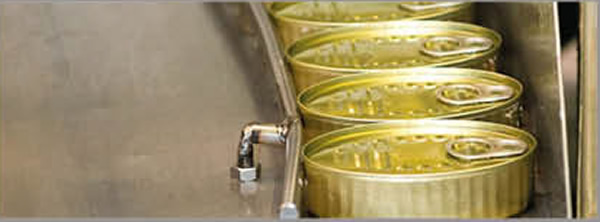

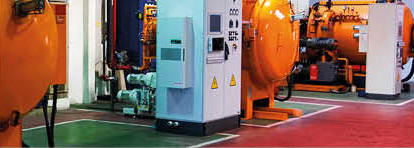


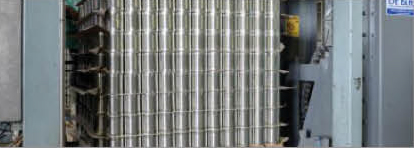


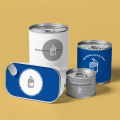

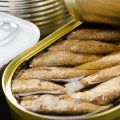

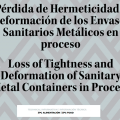
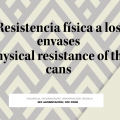

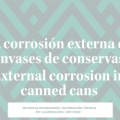



0 Comments